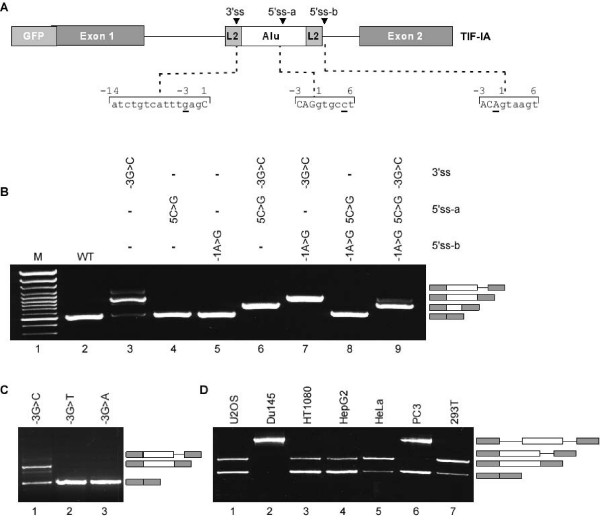Figure 4.
A single point mutation activates the L2-AEx in wild-type TIF-IA. (A) A schematic description of the TIF-IA mini-gene cloned into pEGFP-C3 vector, which contains the human genomic sequence from exon 1 to 2 of locus 15. The sequences of the splice sites are shown below. (B) The WT mini-gene and the indicated mutants were transfected into 293T cells. Cytoplasmic RNA was extracted and splicing products were separated on 1.5% agarose gel after RT-PCR analysis, using primers specific for the mini-gene RNA. The mRNA isoforms are shown on the right; the difference between the two upper products is due to alternative 5' splicing of the L2-AEx. (C) Similar analysis to panel B. Position -3 of the 3'ss was mutated from G to each of the other three nucleotides. (D) Different selection of the L2-AEx among cells. Transfection of TIF-IA mini-gene with a G → C mutation at position -3 of the 3'ss of the L2-AEx to seven different cell lines (the name of each cell line is indicated above the lane). The four splicing products are illustrated on the right. From bottom to top are: L2-AEx skipped isoform, selection of 5'ss-b Alu-containing exon, intron retention isoform, and unspliced mRNA. U2OS is a human-bone-osteosarcoma epithelial cell line. Du145 is a prostate-cancer cell line. HT1080 is a fibrosarcoma cell line. HepG2 is a hepatoma cell line. HeLa cells are human epithelial cells from a fatal cervical carcinoma. PC3 is a prostate cancer cell line and 293T is a human-embryonic-kidney cell line.

